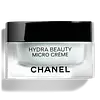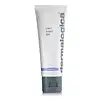What's inside
What's inside
 Key Ingredients
Key Ingredients

 Benefits
Benefits

 Concerns
Concerns

 Ingredients Side-by-side
Ingredients Side-by-side

Water
Skin ConditioningGlycerin
HumectantAlcohol
AntimicrobialPropanediol
SolventButylene Glycol
HumectantIsodecyl Neopentanoate
EmollientIsononyl Isononanoate
EmollientPentylene Glycol
Skin ConditioningIsododecane
EmollientJojoba Esters
EmollientCamellia Japonica Flower Extract
EmollientZingiber Officinale Root Extract
MaskingButyrospermum Parkii Butter
Skin ConditioningMethyl Methacrylate Crosspolymer
Nylon-6
Phenoxyethanol
PreservativeDextrin Palmitate
EmulsifyingNeopentyl Glycol Diheptanoate
EmollientSqualane
EmollientHydrogenated Polydecene
EmollientSodium Acrylates/C10-30 Alkyl Acrylate Crosspolymer
Parfum
MaskingSodium Carbomer
Emulsion StabilisingDipropylene Glycol
HumectantHydroxystearic Acid
CleansingSodium Palmitate
CleansingDisodium EDTA
Amodimethicone
Sodium Citrate
BufferingPalmitic Acid
EmollientSodium Hyaluronate
HumectantT-Butyl Alcohol
PerfumingTocopherol
AntioxidantOctyldodecyl Myristate
EmollientDenatonium Benzoate
MaskingCitric Acid
BufferingCI 42090
Cosmetic ColorantCI 77510
Cosmetic ColorantWater, Glycerin, Alcohol, Propanediol, Butylene Glycol, Isodecyl Neopentanoate, Isononyl Isononanoate, Pentylene Glycol, Isododecane, Jojoba Esters, Camellia Japonica Flower Extract, Zingiber Officinale Root Extract, Butyrospermum Parkii Butter, Methyl Methacrylate Crosspolymer, Nylon-6, Phenoxyethanol, Dextrin Palmitate, Neopentyl Glycol Diheptanoate, Squalane, Hydrogenated Polydecene, Sodium Acrylates/C10-30 Alkyl Acrylate Crosspolymer, Parfum, Sodium Carbomer, Dipropylene Glycol, Hydroxystearic Acid, Sodium Palmitate, Disodium EDTA, Amodimethicone, Sodium Citrate, Palmitic Acid, Sodium Hyaluronate, T-Butyl Alcohol, Tocopherol, Octyldodecyl Myristate, Denatonium Benzoate, Citric Acid, CI 42090, CI 77510
Water
Skin ConditioningGlycerin
HumectantAloe Barbadensis Leaf Juice
Skin ConditioningDimethicone
EmollientButylene Glycol
HumectantPyrus Malus Fruit Extract
Skin Conditioning1,2-Hexanediol
Skin ConditioningDiethylhexyl Carbonate
EmollientOpuntia Ficus-Indica Stem Extract
Skin ConditioningSodium Hyaluronate
HumectantDipotassium Glycyrrhizate
HumectantHydrolyzed Sodium Hyaluronate
Skin ConditioningLavandula Angustifolia Flower Extract
CleansingStearyl Heptanoate
EmollientCetyl PEG/PPG-10/1 Dimethicone
EmulsifyingHydroxyacetophenone
AntioxidantSea Salt
AbrasiveDimethicone Crosspolymer
Emulsion StabilisingStearyl Caprylate
EmollientLauryl PEG-9 Polydimethylsiloxyethyl Dimethicone
Skin ConditioningPotassium Sorbate
PreservativeCitric Acid
BufferingSodium Benzoate
MaskingDisodium Phosphate
BufferingLinalool
PerfumingLimonene
PerfumingWater, Glycerin, Aloe Barbadensis Leaf Juice, Dimethicone, Butylene Glycol, Pyrus Malus Fruit Extract, 1,2-Hexanediol, Diethylhexyl Carbonate, Opuntia Ficus-Indica Stem Extract, Sodium Hyaluronate, Dipotassium Glycyrrhizate, Hydrolyzed Sodium Hyaluronate, Lavandula Angustifolia Flower Extract, Stearyl Heptanoate, Cetyl PEG/PPG-10/1 Dimethicone, Hydroxyacetophenone, Sea Salt, Dimethicone Crosspolymer, Stearyl Caprylate, Lauryl PEG-9 Polydimethylsiloxyethyl Dimethicone, Potassium Sorbate, Citric Acid, Sodium Benzoate, Disodium Phosphate, Linalool, Limonene
 Reviews
Reviews

Ingredients Explained
These ingredients are found in both products.
Ingredients higher up in an ingredient list are typically present in a larger amount.
Butylene Glycol (or BG) is used within cosmetic products for a few different reasons:
Overall, Butylene Glycol is a safe and well-rounded ingredient that works well with other ingredients.
Though this ingredient works well with most skin types, some people with sensitive skin may experience a reaction such as allergic rashes, closed comedones, or itchiness.
Learn more about Butylene GlycolCitric Acid is an alpha hydroxy acid (AHA) naturally found in citrus fruits like oranges, lemons, and limes.
Like other AHAs, citric acid can exfoliate skin by breaking down the bonds that hold dead skin cells together. This helps reveal smoother and brighter skin underneath.
However, this exfoliating effect only happens at high concentrations (20%) which can be hard to find in cosmetic products.
Due to this, citric acid is usually included in small amounts as a pH adjuster. This helps keep products slightly more acidic and compatible with skin's natural pH.
In skincare formulas, citric acid can:
While it can provide some skin benefits, research shows lactic acid and glycolic acid are generally more effective and less irritating exfoliants.
Most citric acid used in skincare today is made by fermenting sugars (usually from molasses). This synthetic version is identical to the natural citrus form but easier to stabilize and use in formulations.
Read more about some other popular AHA's here:
Learn more about Citric AcidGlycerin is already naturally found in your skin. It helps moisturize and protect your skin.
A study from 2016 found glycerin to be more effective as a humectant than AHAs and hyaluronic acid.
As a humectant, it helps the skin stay hydrated by pulling moisture to your skin. The low molecular weight of glycerin allows it to pull moisture into the deeper layers of your skin.
Hydrated skin improves your skin barrier; Your skin barrier helps protect against irritants and bacteria.
Glycerin has also been found to have antimicrobial and antiviral properties. Due to these properties, glycerin is often used in wound and burn treatments.
In cosmetics, glycerin is usually derived from plants such as soybean or palm. However, it can also be sourced from animals, such as tallow or animal fat.
This ingredient is organic, colorless, odorless, and non-toxic.
Glycerin is the name for this ingredient in American English. British English uses Glycerol/Glycerine.
Learn more about GlycerinSodium Hyaluronate is hyaluronic acid's salt form. It is commonly derived from the sodium salt of hyaluronic acid.
Like hyaluronic acid, it is great at holding water and acts as a humectant. This makes it a great skin hydrating ingredient.
Sodium Hyaluronate is naturally occurring in our bodies and is mostly found in eye fluid and joints.
These are some other common types of Hyaluronic Acid:
Learn more about Sodium HyaluronateWater. It's the most common cosmetic ingredient of all. You'll usually see it at the top of ingredient lists, meaning that it makes up the largest part of the product.
So why is it so popular? Water most often acts as a solvent - this means that it helps dissolve other ingredients into the formulation.
You'll also recognize water as that liquid we all need to stay alive. If you see this, drink a glass of water. Stay hydrated!
Learn more about Water